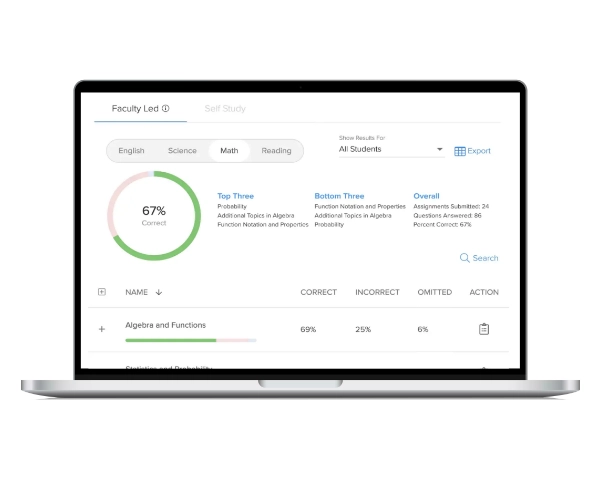Ensuring equity and access in AP remains a daunting challenge for high school administrators across the nation. Although equity and access gaps have narrowed nationwide over the past decade, data still reveals a need for closer inspection at the school and district level to identify targeted areas of growth. In order to begin this critical work, school leaders must be willing to analyze the nature and effectiveness of their existing AP programs and serve as change agents to overcome systemic barriers and resistance to true equity and access. They must also be willing to accept what the data reveals in regard to support for their underrepresented and underserved student populations, and invest ample time, energy, and resources with the goal of fine-tuning the effectiveness and culture of their programs.
Research on Closing Equity and Access Gaps
Current research indicates that when given the opportunity, students from underrepresented and low-income backgrounds perform well in advanced coursework when provided the necessary support. In fact, economically disadvantaged students who take AP courses in high school are more likely to graduate on time, enroll in college, and earn a degree. Low-income students made up roughly 21% of the AP cohort population in 2010, compared to 32% in 2020. However, disparities in AP exam scores have widened in states with the greatest racial gaps in K-12 resources. In addition, inequalities exist in the course enrollment percentage of Black and Latino students in schools that offer an AP program. With that in mind, it is critical that school leaders are aware of the specific challenges regarding equity and access, and approach the work of closing gaps with a solutions-oriented mindset and a clear vision to initiate change.
Solutions & Planning
Step 1: Develop an Equity Team: This team should consist of the school principal, instructional leads, department chairs, AP teachers, counselors, and other stakeholders invested in the school’s AP program. The team should be diverse, open-minded, and committed to the change process. The team should start by orienting themselves to the Equity and Access Policy Statement from the College Board® which “encourages the elimination of barriers that restrict access to AP for students from ethnic, racial and socioeconomic groups that have been traditionally underserved.” Next, the team should review its comprehensive school improvement plan goals related to equity and compare them against the district’s mission, vision, and strategic plan. Target areas of alignment and begin developing an equity and access goal that is specific, measurable, and attainable.
Step 2: Analyze the Data: Analyze schoolwide AP data to include enrollment by course, student demographics by race/ethnicity, gender, socioeconomic status, grade level, and disability. Highlight any gaps that are revealed and identify school and classroom-level policies and practices that enhance or restrict student opportunities to participate in the AP program. For example, if the team discovers that Hispanic students are disproportionately enrolled in AP Spanish courses, or socioeconomically disadvantaged students are underrepresented in AP STEM courses, then root causes should be investigated. It is critical during this phase to examine existing enrollment policies and barriers, including teacher recommendations, students’ prior grades and coursework, and the use of the PSAT® and AP Potential as tools for student recruitment.
Step 3: Examine Existing Level of Access and Supports: Discuss curricular concerns, instructional strategies, and available human and material resources that would be helpful in recruiting and retaining students who have traditionally not had access or have been struggling in AP classes. Examples include reviewing prerequisite and honors (if applicable) course enrollment to assess the level of participation for underrepresented groups; the development of vertical teams with cluster elementary and middle schools to identify and develop skills and supports for maximum student success; active teaching and learning through culturally responsive pedagogy; up-to-date technology and college-level textbooks; available subsidies to pay for books, exams, or transportation; and the pervasive use of supplemental classroom resources such as AP Classroom and UWorld’s suite of interactive tools that reports on AP progress, usage, and test readiness, which helps students to develop the critical thinking skills necessary for college-level success.
Step 4: Plan Using Best Practices: Create an action plan and a realistic timeline to achieve the equity goal by identifying policies and best practices that can be used to improve the diversity of the AP student and teacher population. Some of the action steps may be accomplished immediately, while others may take a year or longer to achieve. Include qualitative feedback by conducting student interviews and surveys, developing student focus groups, and planning parent outreach efforts. Best practices include adopting a barrier-free open enrollment policy, the development of an AP Bootcamp or Summer Bridge program for incoming freshmen, and ongoing Parent Academies to inform the community about the logistics, benefits, and progress of the AP program. During this phase, the equity team should also discuss teacher recruitment, available professional development, and outreach opportunities such as encouraging their master teachers to become AP Advocates. New and experienced AP teachers should be encouraged to attend district and state AP workshops during the year and attend AP summer institutes for their respective subjects every five years. The College Board offers scholarships that teachers can utilize to assist with summer institute costs, while AP mentoring provides more intensive support in a small group, virtual environment.
Summary
In summary, building equity and access in an AP program is strenuous work. It takes vision, the investment of time, material, and human resources, and invested stakeholders to plan and implement a program that delivers equity and access to all students regardless of race, gender, socioeconomic status or disability. A recent definition from the National Equity Project puts these efforts into clear perspective; “Educational equity means that each child receives what he or she needs to develop to his or her full academic and social potential.”
At UWorld, our rigorous, College Board-aligned questions and detailed explanations help make difficult AP content more accessible for all students. Learn more.
Kenny Tucker, Ed.S
Kenny is an assistant principal in the Henry County (GA) School District and previously taught AP U.S. History for thirteen years in the Rockdale and Dekalb County school districts. He is an AP Reader, APSI Workshop Consultant, and serves on the Consultant Advisory Panel. He has presented on the topics of vertical teams and access and equity at several College Board conferences, and recently co-developed a workshop series titled “Achieving Equity in AP.” He loves to spend his free time cooking, reading, traveling, and spending quality time with family.




